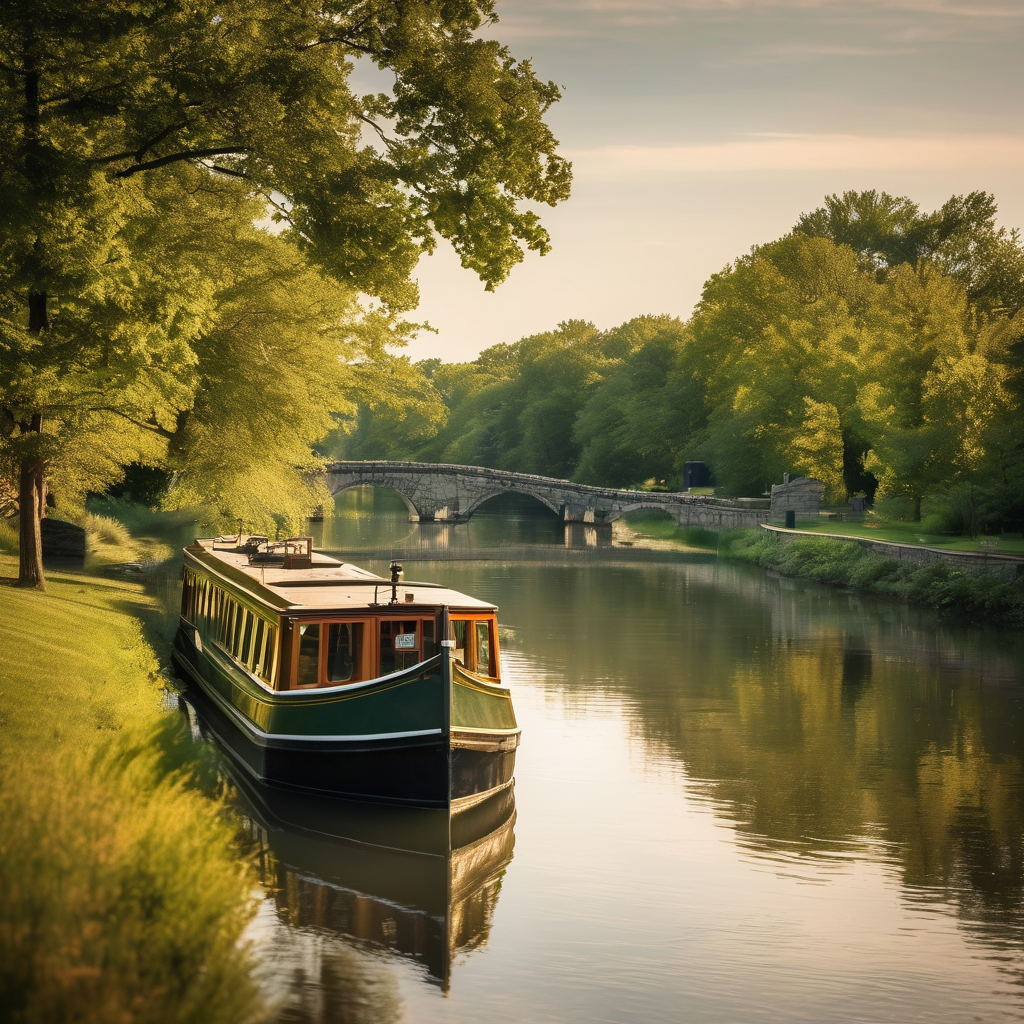On October 26, 1825, the Erie Canal was inaugurated when New York Governor DeWitt Clinton embarked on a canal boat named the Seneca Chief from Buffalo, marking the beginning of a monumental engineering achievement. Amid celebratory events, Clinton’s vessel sailed toward Albany, culminating in a symbolic event dubbed “the Wedding of the Waters,” where barrels filled with Lake Erie water were ceremoniously poured into the Atlantic Ocean on November 4.
The Erie Canal, a National Historic Monument, has been celebrated for its significant impact on America’s economic landscape, connecting the Midwest to the Atlantic and marking its bicentennial this month. Clinton’s vision was profound; as a young politician, Abraham Lincoln aspired to be “the DeWitt Clinton of Illinois,” emphasizing the canal’s monumental national significance. As a historian focused on 19th-century America, I appreciate how civil engineering projects like the Erie Canal not only transformed physical landscapes but also influenced the country’s cultural and economic fabric during a time of political and infrastructural challenges.
Initially met with skepticism, Clinton’s ambitious plan sought to link New York City to the Great Lakes. Although the project faced opposition, including a veto from President James Madison who deemed federal support for state projects unconstitutional, Clinton and his supporters persevered. The canal’s construction began on July 4, 1817, taking eight years to complete and stretching 363 miles, featuring numerous aqueducts and locks. This immense task relied heavily on human labor, with a significant portion of workers being Irish immigrants.
In a short time, the canal proved its worth, drastically reducing shipping costs between Lake Erie and New York City from $100 per ton to under $9. Within decades, the canal’s freight services surpassed those of the Mississippi River, generating about $200 million in trade, equivalent to over $8 billion today. Towns along the canal experienced rapid growth, transforming into booming urban centers, with Rochester leading as the fastest-growing city in America during the 1830s.
Beyond economics, the Erie Canal facilitated a surge of religious revival and innovation during the Industrial Revolution. It played a pivotal role in the Second Great Awakening, a movement that sought community and stability amidst societal changes. Revivalists thrived along the canal’s route, leading to the growth of various religious denominations, including the rise of the Mormon Church founded by Joseph Smith in Fayette, New York, in 1830.
The canal served not only as a commercial artery but also as a vital connection between the Atlantic seaboard and the agrarian Midwest. Ohio’s Governor Ethan Allen Brown recognized the importance of such infrastructure, commissioning his own canals to link with the Erie Canal, further enriching trade networks.
However, the prosperity brought by the canal came at a significant cost to Indigenous communities, particularly the Haudenosaunee, who faced pressure to cede their lands to make way for canal construction and settlement.
As the nation approaches its 250th anniversary in 2026, reflections on the rise of such transformative projects as the Erie Canal remind us of the foundational role infrastructure plays in American democracy. While contemporary political challenges and governmental gridlock persist, they underline the need for collaboration on essential infrastructure projects, which remain vital for the country’s future—echoing the historical impact of the Erie Canal that reshaped America’s economic and cultural landscape.
